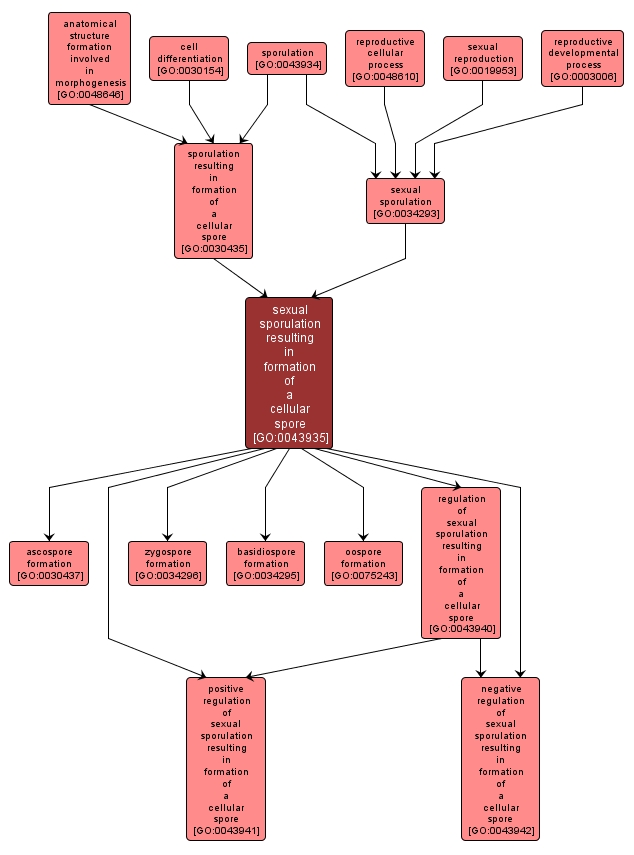GO TERM SUMMARY
|
| Name: |
sexual sporulation resulting in formation of a cellular spore |
| Acc: |
GO:0043935 |
| Aspect: |
Biological Process |
| Desc: |
The formation of spores derived from the products of meiosis. A cellular spore is a cell form that can be used for dissemination, for survival of adverse conditions because of its heat and dessication resistance, and/or for reproduction. |
|

|
INTERACTIVE GO GRAPH
|














